Collecting seeds on Aphrodite’s island
On a beautiful Mediterranean island where time stops, and where legend relates that Aphrodite, the goddess of love, was born, we found a paradise of endemic plants. Indeed there are 139 plants that grow only on this beautiful island of Cyprus, representing 8.55% of the flora. It’s tempting to think that this richness of endemic plants has been influenced by the goddess herself. Unfortunately however, the answer lies in the theory of island biogeography.
At least it is easy to remember the Latin names of most of them, as they frequently refer to Aphrodite’s island, Arabis cypria, Astragalus cyprius, Bosea Cypria, Cyprinia gracilis, Dianthus cyprius, Odontites cypria, Ophrys cypria, Orchis cyprium, Sedum cyprium, Tulipa cypria, Euphorbia cypria, among others.
The project partners went on a joint field trip to Cyprus from 1st to 5th of July. It was an intense but enjoyable and fruitful week. Several seed collections of endemic flora were gathered, and relationships between the partners have been strengthened.
Partners had the opportunity to visit The Agricultural Research Institute Nicosia, where it was possible to exchange information on seed cleaning, curation and banking, and database management. Some time was also spent in the Herbarium, where some plant material was verified.
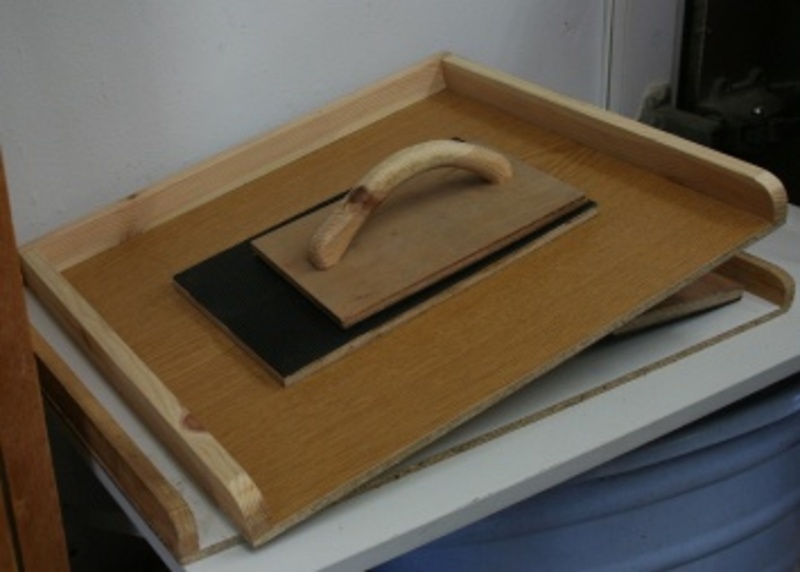 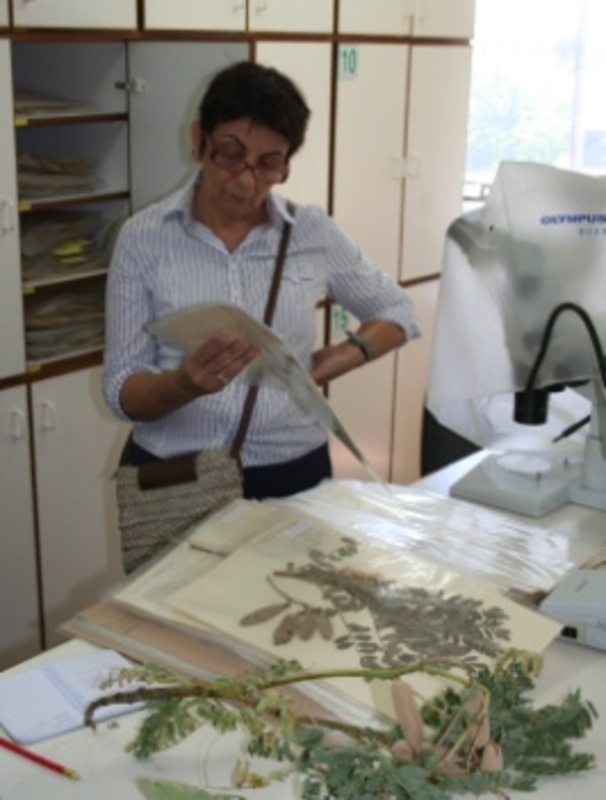 |
Photo left: Handmade tool used by partners from Cyprus to clean seeds (Photo: T.Gil)
Photo right: Christina Fournaraki from MAICh, verifying some Astragalus lusitanicus in the Herbarium of The Agricultural Research Institute Nicosia (Photo: T.Gil)
Among other incredible sites, we explored the area around Trodos area, in particular Pafos Forest and Trodos Forest. We had the opportunity to visit Cedar Valley, a Nature Reserve in Pafos Forest. Here Cyprus cedar, the only endemic tree of Cyprus (Cedrus brevifolia) is confined to a small area at elevations between 900-1400 meters. The trees’ natural stands also contain Calabrian pines (Pinus brutia), Golden oaks (Quercus alnifolia) and Strawberry trees (Arbutus andrachnae) with their red-brown trunks. The Golden oak is a small but beautiful evergreen tree, which is designated as the National Tree of Cyprus. It takes its name from the dense golden brown covering of the lower part of its leaves. Almost all the partners, including myself, coming as I do from the western Mediterranean marvelled at the beauty of Strawberry tree. It is common in Cyprus, while its relative, Arbutus unedo, is really rare in Cyprus but common further west.
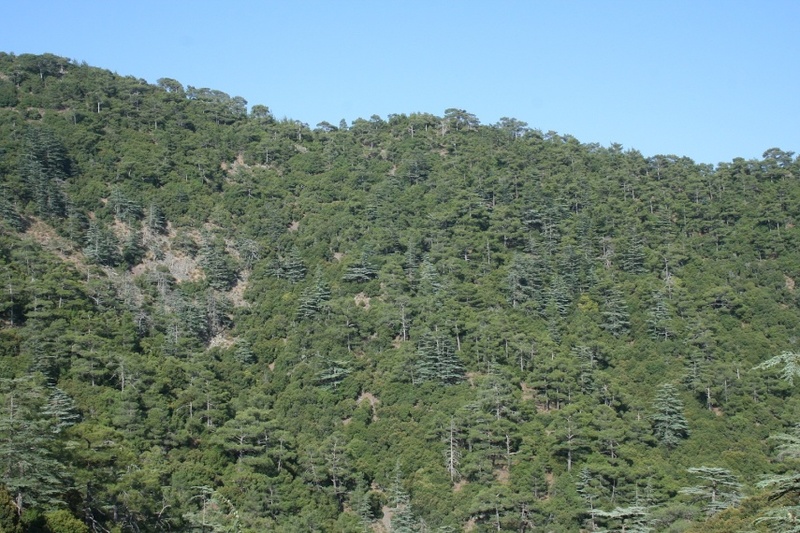 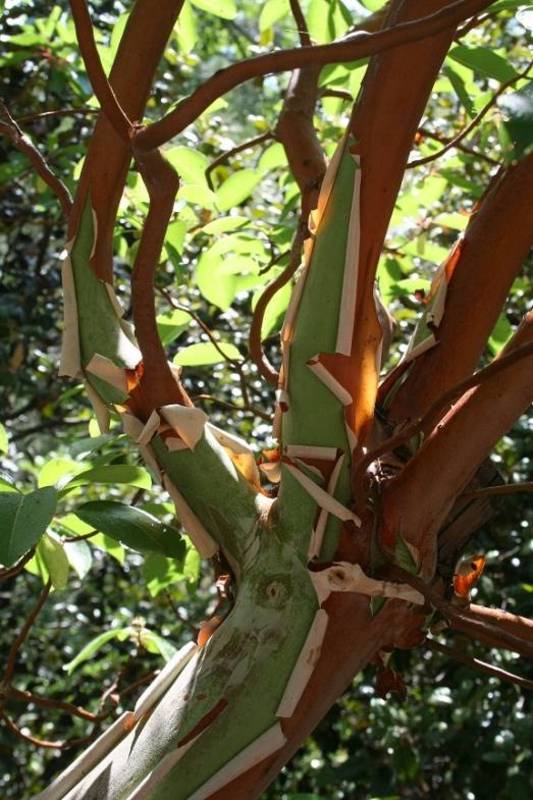 |
Photo left: Cyprus Cedar trees in the Cedar Valley (Photo: T.Gil)
Photo right: Trunk of Strawberry Tree Arbutus andrachnae (Photo: T.Gil)
Among shaded rocks and road banks near a stream within Cedar Valley we collected seeds of a very rare endemic plant, Purple rock-cress (Arabis kennedyae). This plant is listed as endangered in The Red Data Book of the Flora of Cyprus.
Close to Trodos Square area we were astonished to see as many as ten endemic plants concentrated within a very small area. We wanted to collect the seeds of another endemic plant, Alyssum troodi, but the plants were still in flower. It seems that this year fruiting is delayed.
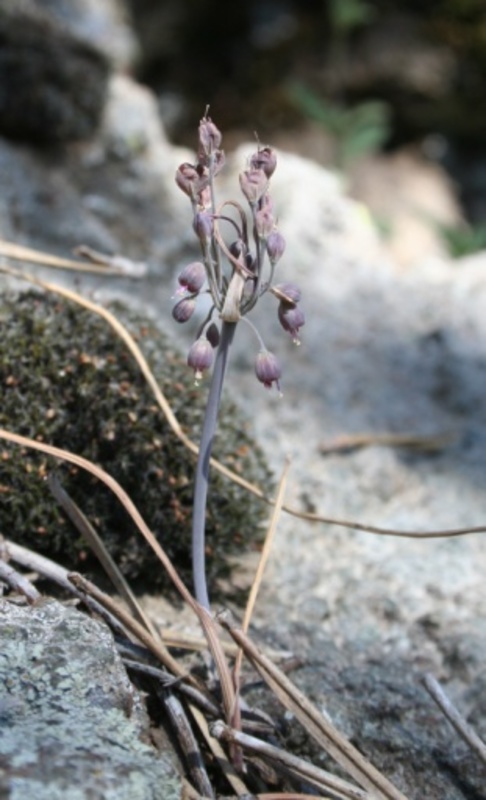 |
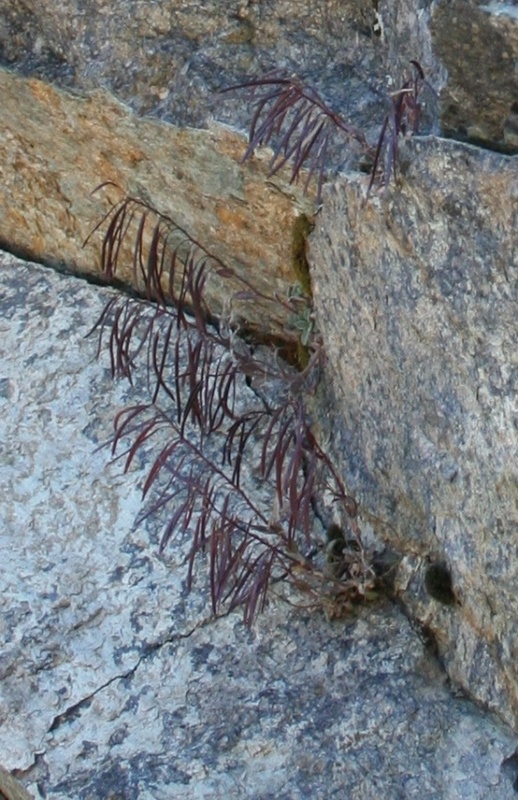 |
Photo left: Endemic garlic Allium cyprium (Photo: T. Gil)
Photo right: Long thin purple fruits of Kennedy’s rock-cress (Arabis purpurea) (Photo: T. Gil)
We also visited the area of Trodos Forest where a population of Allium cyprium was to be found. This plant was first described by Salvatore Brullo ten years ago. It was the first time I had the opportunity of seeing the plant and the botanist who described it together. In the surrounding shady rocks we collected Kennedy’s rock-cress (Arabis purpurea) with its striking purple long thin fruits called siliques.
Close to the Agios Ioannis Monastery we obtained a high quality seed collection from the Compositae plant Ptilostemon chamaepeuce. This shrub was very abundant, covering a large area, on rocky slopes and roadsides, among garigue vegetation on limestone. The fruits, with their feathery pappus, were just ready for harvesting. We split into small groups in order to collect seeds from as wide an area as possible. Within forty minutes we had a really good collection, so we had a well-deserved break with a refreshing frappe coffee.
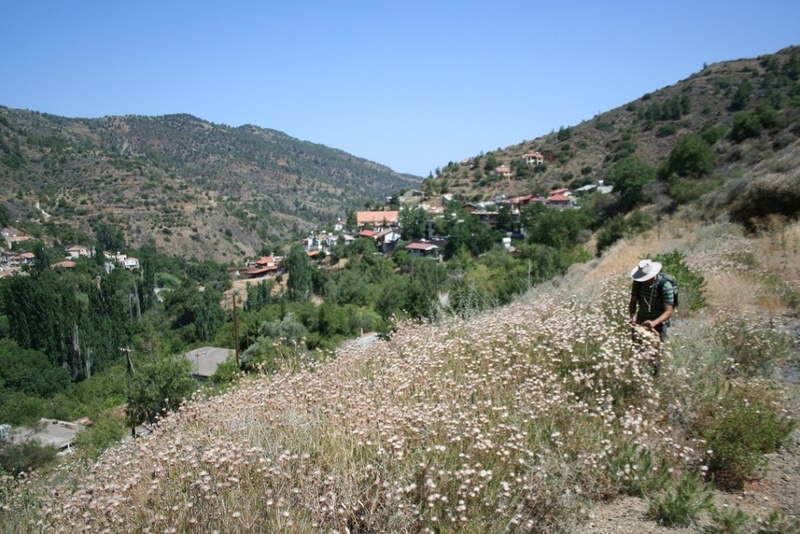
Photo: Angelos Kyratzis collecting seeds of Ptilostemon chamaepeuce (Photo: T.Gil)

